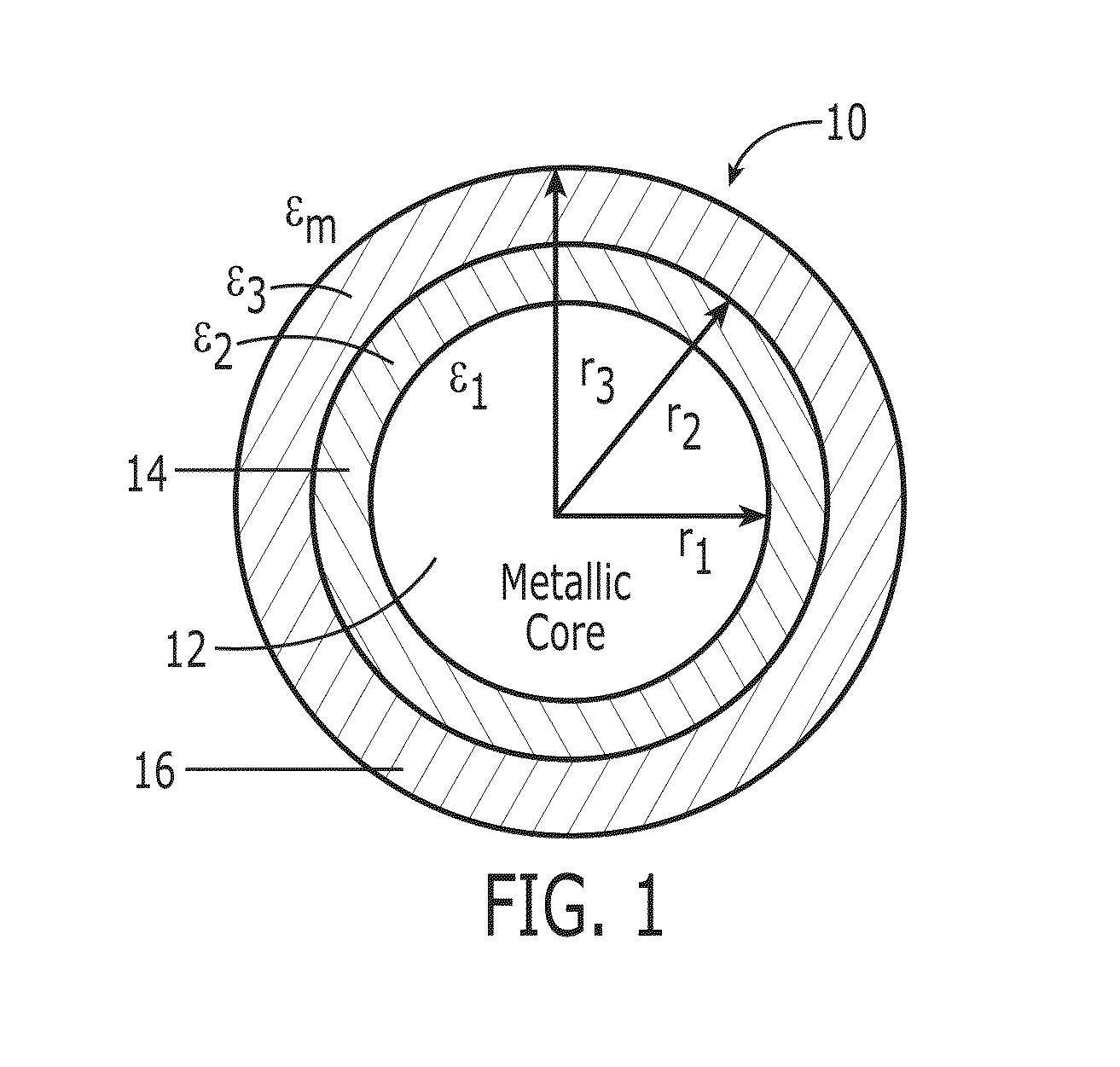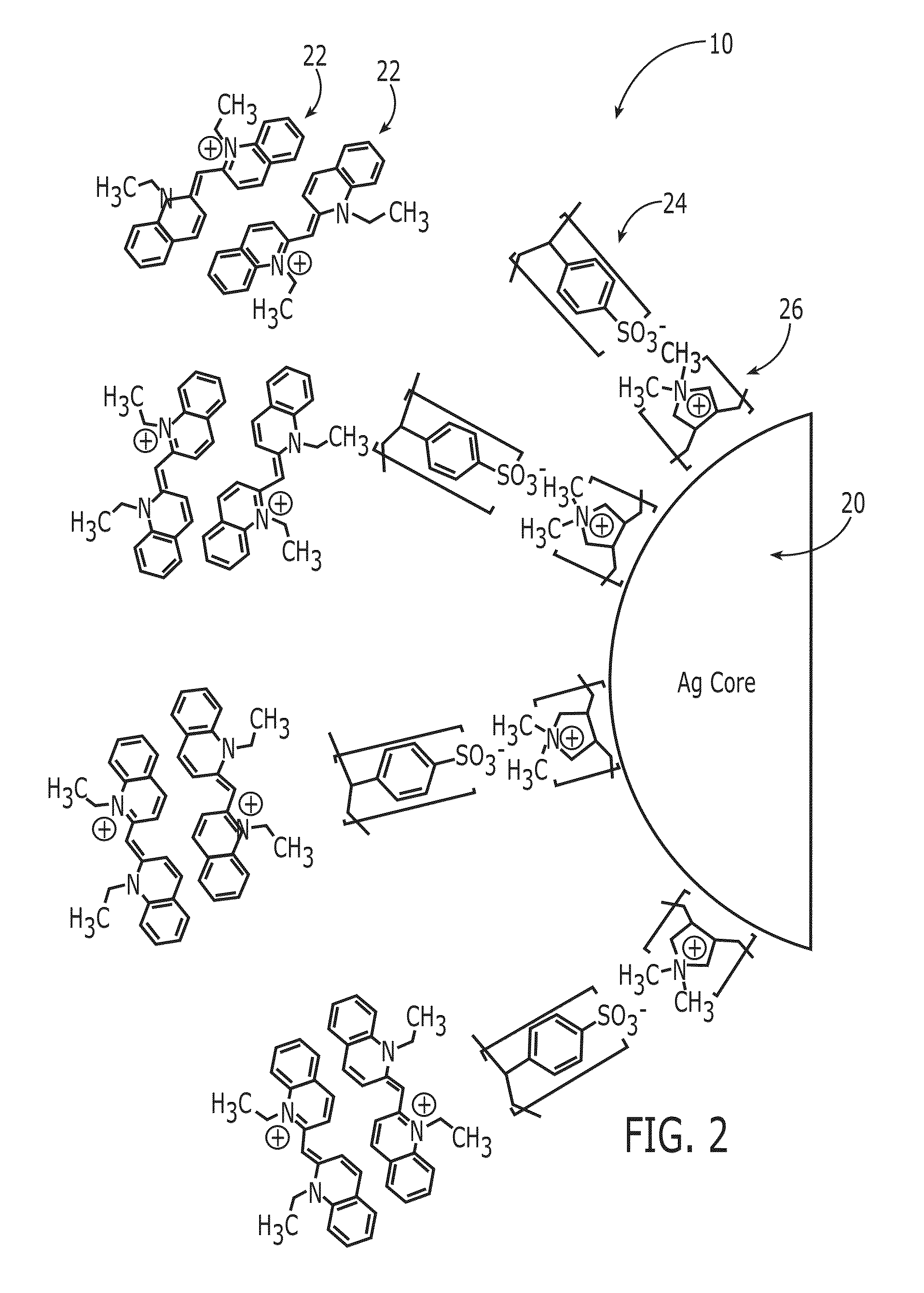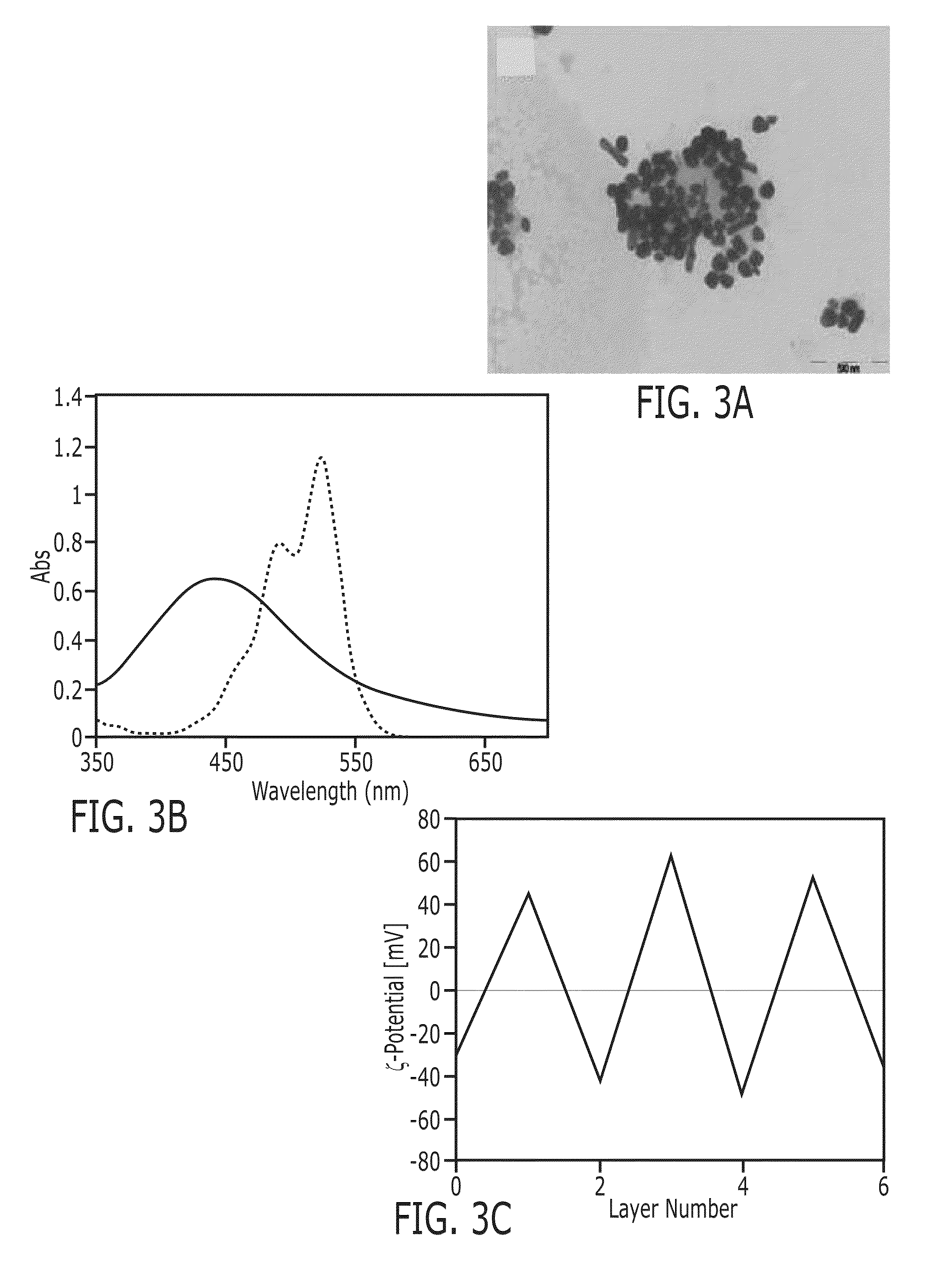MultiLayered plexcitonic nanoparticles and methods of producing same for controlling plasmon-exciton distance
a plexcitonic nanoparticle and nanoparticle technology, applied in nanotechnology, thin material processing, instruments, etc., can solve the problems of spacer layer thickness and its impact on plasmon-exciton coupling in these nanoparticle systems that have not been studied systematically
- Summary
- Abstract
- Description
- Claims
- Application Information
AI Technical Summary
Benefits of technology
Problems solved by technology
Method used
Image
Examples
Embodiment Construction
[0021]The present invention and the various features and advantageous details thereof are explained more fully with reference to non-limiting embodiments that are illustrated in the accompanying drawings and detailed in the following description. Descriptions of well-known materials and methods are omitted so as to not unnecessarily obscure the embodiments herein. The examples used herein are intended merely to facilitate an understanding of ways in which the embodiments herein may be practiced and to further enable those of skill in the art to practice the present invention. Accordingly, the examples should not be construed as limiting the scope of the present invention.
[0022]The present invention as taught herein employs a variably thick polyelectrolyte spacer layer as a means of building multilayered plexcitonic nanoparticles and controlling plasmon-exciton distance. Alternating cationic poly(diallyldimethyl ammonium chloride) (PDADMAC) and anionic poly(styrene sulfonate) (PSS) a...
PUM
| Property | Measurement | Unit |
|---|---|---|
| absorbance | aaaaa | aaaaa |
| time | aaaaa | aaaaa |
| time | aaaaa | aaaaa |
Abstract
Description
Claims
Application Information
 Login to View More
Login to View More - R&D
- Intellectual Property
- Life Sciences
- Materials
- Tech Scout
- Unparalleled Data Quality
- Higher Quality Content
- 60% Fewer Hallucinations
Browse by: Latest US Patents, China's latest patents, Technical Efficacy Thesaurus, Application Domain, Technology Topic, Popular Technical Reports.
© 2025 PatSnap. All rights reserved.Legal|Privacy policy|Modern Slavery Act Transparency Statement|Sitemap|About US| Contact US: help@patsnap.com



